All posts by Andrea Grant
About Andrea Grant
Andrea Grant is a Children's Services Specialist. View all posts by Andrea Grant →
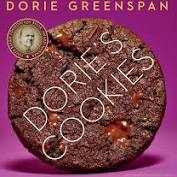
Bibliobites in November/December: Finding Dorie
 Who doesn’t love a cookie? They’re (mostly) neat to eat, they’re usually enjoyably petite, and they’re unintimidating to make. They’re a practical, popular, and yummy choice for parties and holiday dinners, and they’re eminently giftable. Prolific cookbook author and James Beard award-winner Dorie Greenspan’s Dorie’s Cookies tackles its eponymous topic with all the fervor and thoroughness you might expect from this baking maven. Did her collection of over 160 recipes hit the mark and help us attain cookie nirvana?
Who doesn’t love a cookie? They’re (mostly) neat to eat, they’re usually enjoyably petite, and they’re unintimidating to make. They’re a practical, popular, and yummy choice for parties and holiday dinners, and they’re eminently giftable. Prolific cookbook author and James Beard award-winner Dorie Greenspan’s Dorie’s Cookies tackles its eponymous topic with all the fervor and thoroughness you might expect from this baking maven. Did her collection of over 160 recipes hit the mark and help us attain cookie nirvana?
The size and heft of this book puts it squarely into coffee-table territory– literally, as it’s square rather than the more typical rectangle; so it easily stayed open– a quality much prized by group members! There are full-page photos of almost all the recipes; some people loved the closeup nature of the pictures (one cookie on a page– that’s a 9″ x 9″ cookie), but others thought the photos made the cookies look unnaturally shiny and plastic-y. The wider format of the pages made for a readable layout with ample white space; however, many of the headnotes were so long that a one-page recipe often overflowed into two or even three! Ingredients are listed by weight as well as volume, a plus for those of us who love our kitchen scales. Greenspan gives lots of ideas for changing up the recipes, and she lets you know which cookies freeze well, and the best way to do so; information much appreciated at a busy time of year. There were some complaints about baking times– for some of us, the indicated time almost always led to burned cookies, but others had the opposite experience! And knowing our own oven’s peculiarities didn’t always predict which issue we would have, so keep an eye on your cookies if it’s your first time with a particular recipe. But most importantly, how did the cookie crumble when it came time for baking and eating?
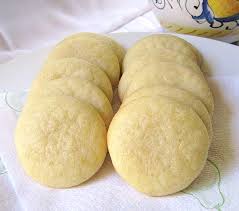 A couple of people tried the lemon sugar cookies, and both gave them high praise; though the dough was sticky and somewhat difficult to work with, the lemon flavor was strong and refreshing. The recipe has you rub sugar and lemon zest together with your fingers, which was effective in amping up that lemony tang. Almond crackle cookies were intriguing as they only have 3 ingredients (sugar, egg, and sliced almonds); they tasted good but fell apart and “went all over the place” when you tried to eat them. Perhaps these would be better crumbled over ice cream? Another recipe with a somewhat unusual list of ingredients was Natasha’s mum’s fruit and walnut bread bars. These had no fat in them at all; egg whites bind the fruit and nuts together. The result was a chewy, almost tough, bar that needed the recommended crystallized ginger to give it oomph; this recipe is an interesting idea but probably not a keeper. Also a bit different,
A couple of people tried the lemon sugar cookies, and both gave them high praise; though the dough was sticky and somewhat difficult to work with, the lemon flavor was strong and refreshing. The recipe has you rub sugar and lemon zest together with your fingers, which was effective in amping up that lemony tang. Almond crackle cookies were intriguing as they only have 3 ingredients (sugar, egg, and sliced almonds); they tasted good but fell apart and “went all over the place” when you tried to eat them. Perhaps these would be better crumbled over ice cream? Another recipe with a somewhat unusual list of ingredients was Natasha’s mum’s fruit and walnut bread bars. These had no fat in them at all; egg whites bind the fruit and nuts together. The result was a chewy, almost tough, bar that needed the recommended crystallized ginger to give it oomph; this recipe is an interesting idea but probably not a keeper. Also a bit different,  Moroccan semolina and almond cookies had a subtle citrus flavor and a slightly gritty texture from the semolina; a quality appealing to some, but a definite negative for others. Two bite one-chip cookies were a disappointment; they were “a pain to make” (you had to roll a small ball of dough, insert one chip into it, re-roll to hide the chip– 60 times!), and one person’s batch flattened out so much that the cookies looked a bit odd with their one little chocolate chip! Swedish dream cookies also flattened out too much and didn’t look much like their enticing photo, though the brown butter flavor was delicious. And crash-o cookies were a tasty version of oatmeal cookies (with raisins and chopped milk chocolate), but “they really needed nuts!”
Moroccan semolina and almond cookies had a subtle citrus flavor and a slightly gritty texture from the semolina; a quality appealing to some, but a definite negative for others. Two bite one-chip cookies were a disappointment; they were “a pain to make” (you had to roll a small ball of dough, insert one chip into it, re-roll to hide the chip– 60 times!), and one person’s batch flattened out so much that the cookies looked a bit odd with their one little chocolate chip! Swedish dream cookies also flattened out too much and didn’t look much like their enticing photo, though the brown butter flavor was delicious. And crash-o cookies were a tasty version of oatmeal cookies (with raisins and chopped milk chocolate), but “they really needed nuts!”
 Melody cookies are based on the classic Nabisco cookie of the same name; these had good chocolate flavor but the dough was sticky and hard to roll out, and “Deb Perelman’s (of Smitten Kitchen) version is better.” However, world peace cookies were satisfyingly chocolaty and buttery. They were the slice-and-bake type, which made them easy and convenient to produce. Coffee malteds were also a hit; though the dough was sticky (is there a theme here?) the flavor combination was excellent and worth the trouble. Hamantaschen were also a bit fussy to make, but the end result was “really good.” The fruit filling in particular drew high praise. Matzoh morsels were a dried fruit and chocolate no-bake treat which were a creative (if expensive) way to use up matzohs; they were deemed “okay– but I wouldn’t bother making them again.” Leckerli was a Swiss honey-almond cookie similar to lebkuchen; these were fragrant with honey and orange, and were simple to put together. They did call for candied orange peel, for which Greenspan gives a recipe. I was intrigued by the idea of making it myself; and it was so easy to do, and the results so superior to store-bought that I may never buy it again!
Melody cookies are based on the classic Nabisco cookie of the same name; these had good chocolate flavor but the dough was sticky and hard to roll out, and “Deb Perelman’s (of Smitten Kitchen) version is better.” However, world peace cookies were satisfyingly chocolaty and buttery. They were the slice-and-bake type, which made them easy and convenient to produce. Coffee malteds were also a hit; though the dough was sticky (is there a theme here?) the flavor combination was excellent and worth the trouble. Hamantaschen were also a bit fussy to make, but the end result was “really good.” The fruit filling in particular drew high praise. Matzoh morsels were a dried fruit and chocolate no-bake treat which were a creative (if expensive) way to use up matzohs; they were deemed “okay– but I wouldn’t bother making them again.” Leckerli was a Swiss honey-almond cookie similar to lebkuchen; these were fragrant with honey and orange, and were simple to put together. They did call for candied orange peel, for which Greenspan gives a recipe. I was intrigued by the idea of making it myself; and it was so easy to do, and the results so superior to store-bought that I may never buy it again!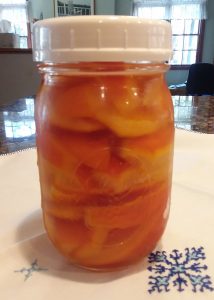
There’s a chapter towards the end of this book that’s called “cocktail cookies;” these are savory, (mostly) buttery bites that turned out to be the biggest hits in the book. Parmesan galettes were easy to make, and “I took them to a party and everyone loved them!” Continuing the cheesy/buttery theme, cheddar-seed wafers were enticingly cheesy and crispy, and they kept well. Rosemary-parm cookies had a somewhat off-putting color (from the pulverized fresh rosemary) but they tasted great, while sesame-sea salt cookies had a subtle yet addictive flavor that we enjoyed at our meeting! Goat cheese and chive cookies were a bit on the bland side; they’d benefit from a topper like the smoked salmon and cream cheese we also sampled at our meeting. And puffed grain and miso cookies were a fantastic, umami-laden version of rice cakes: sweet, salty, and craveable.
Overall, we enjoyed exploring this book: trying new versions of old favorites; branching out into different categories; or finding a new “keeper.” However, despite these positives, no one was rushing out to buy this book. Most of us already have plenty of cookie recipes that we love, not to mention cookie cookbooks; so we probably don’t need another tome for our already overstuffed shelves! And of course, many of the recipes in this (or any other) book are readily available online. If you’re new-ish to cookie-baking and want a book that pretty much covers it all, then this title could be really useful– to bake from and as a helpful reference. But for our group, the ratings once again told the tale: we averaged out to a 3.3 (out of a possible 5) rating. For us this book was likeable, just not a revelation– except for the cocktail cookies. Give ’em a try!
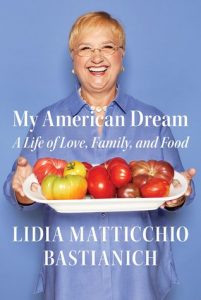 Our next meeting will be Friday January 25 at 11 AM in the Fireplace Room. This month, it’s a twofer: we’ll be reading Lidia Bastianich’s memoir My American dream: a life of love, family, and food; and cooking from Lidia’s Italy in America. Copies of both are available at the main desk. New members always welcome!
Our next meeting will be Friday January 25 at 11 AM in the Fireplace Room. This month, it’s a twofer: we’ll be reading Lidia Bastianich’s memoir My American dream: a life of love, family, and food; and cooking from Lidia’s Italy in America. Copies of both are available at the main desk. New members always welcome!
Happy New Year to all!
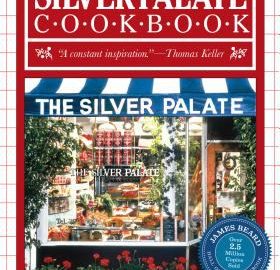
Bibliobites in October: Time Travelers
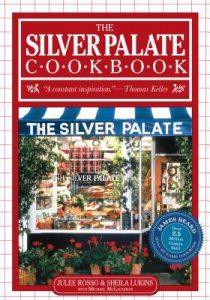 It’s not just a flux capacitor that makes time travel possible– books also have the uncanny ability to take us to another time and place. This month’s title, The Silver Palate Cookbook, brought us back to the 1980s: that Reaganesque decade of big hair, big shoulder pads, and big business. In the 80s, two nascent food trends converged to bring about an unprecedented expansion of food choices, both in restaurants and at the supermarket: the California-casual farm-to-table movement spearheaded by Alice Waters at Chez Panisse; and the New York upscale (dare I say yuppie?) style of new-wave French chefs like Daniel Boulud at Le Cirque. Both trends have produced long-lasting changes in the way we think about, produce, and prepare our food. For us East-coasters, both Martha Stewart and the Silver Palate team of Julee Rosso and Sheila Lukins brought these trends to the home cook. But that was more than 30 years ago– have their innovations stood the test of time?
It’s not just a flux capacitor that makes time travel possible– books also have the uncanny ability to take us to another time and place. This month’s title, The Silver Palate Cookbook, brought us back to the 1980s: that Reaganesque decade of big hair, big shoulder pads, and big business. In the 80s, two nascent food trends converged to bring about an unprecedented expansion of food choices, both in restaurants and at the supermarket: the California-casual farm-to-table movement spearheaded by Alice Waters at Chez Panisse; and the New York upscale (dare I say yuppie?) style of new-wave French chefs like Daniel Boulud at Le Cirque. Both trends have produced long-lasting changes in the way we think about, produce, and prepare our food. For us East-coasters, both Martha Stewart and the Silver Palate team of Julee Rosso and Sheila Lukins brought these trends to the home cook. But that was more than 30 years ago– have their innovations stood the test of time?
It was obvious to all of us that this was an older cookbook– it has no full-color photos; in fact it has no photos of any kind! The illustrations are all pen-and-ink drawings, which some people enjoyed; but others missed the lush photography found in newer books. The overall layout of the book was easy on the eyes, and we enjoyed the authors’ amusing and/or informative sidebars found throughout. From a 2018 perspective, it was fun to read descriptions of, and recipes for, ingredients that were a novelty then, but are now found in any large supermarket (pesto, anyone?). Some in the group had well-loved copies of this title, and had fond memories of particular recipes they frequently made. Many had received this book as a gift, or had gifted copies to family and friends. And as you might expect from a cookbook based on the products of a gourmet shop, many of the recipes were for “fancy” or party food. Some recipes were three pages long and took three days to prepare! We didn’t tackle any of those.
We did our best, however, to enter into the spirit of the decade. Braised short ribs had a nice sauce; the ingredients married well and made for a tasty dinner. Our intrepid cook commented, “I followed everything to a T– except for a few things,” so your results may differ somewhat! Winter pork and fruit ragout also really hit the spot– the various fruits were a surprisingly delicious addition to this warming stew. And osso buco was an excellent version of this classic; it’s time-consuming but worth the trouble. On the other hand, beef stew with cuminseed was “one of the worst beef stews ever.” It had way too much cumin; its flavor overpowered everything else. This recipe was also downgraded because you had to pit 1 1/2 cups of olives! There were lots of chicken recipes in this book; lemon chicken was “pretty good” and was also good left over, but it didn’t have a crisp golden crust as promised. 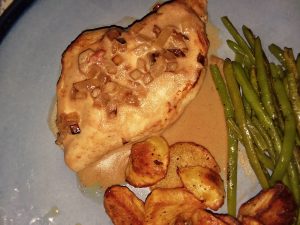 Raspberry chicken wasn’t a winner– the recipe instructed you to cook onions for so long that it was easy to burn them; and though the dish was pleasantly fruity, the raspberry flavor didn’t really come through. And chicken monterey was “tasteless– a lot of work for not much.”
Raspberry chicken wasn’t a winner– the recipe instructed you to cook onions for so long that it was easy to burn them; and though the dish was pleasantly fruity, the raspberry flavor didn’t really come through. And chicken monterey was “tasteless– a lot of work for not much.”
We made a few soups, too– white bean and sausage soup had a fairly ho-hum list of ingredients, but in this case the whole was much more delicious than the parts might have indicated. A keeper! Curried butternut squash soup was likewise delectable; it was velvety and rich-tasting without being heavy. And one person praised roasted yellow pepper soup (from the Silver Palate New Basics book)– that’s a keeper, too. With your soup, you might enjoy Grandma Clark’s soda bread, which had outstanding texture and taste. Or how about zucchini bread, a tasty vehicle for excess garden production. This version is “moist and stays fresh” and was praised for its spicing and walnuts. Despite the fact that this loaf, like all zucchini breads, has no discernible squash taste, “Mr. Fussy won’t touch it!”
A couple of people tried pasta dishes; Mr. Fussy inexplicably enjoyed the pasta puttanesca, which contains anchovies, an ingredient on many people’s “will not eat” list. Perhaps the spicy tomato-based sauce makes up for a lot? Another pasta classic, spaghetti with oil and garlic, somehow wasn’t flavorful– despite a healthy dose of garlic, the dish was “ordinary.” 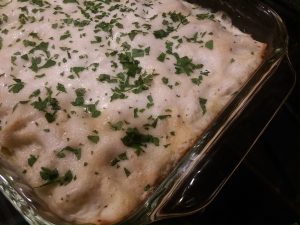 Green lasagna was a bit of work, as all lasagnas are; but it was enjoyably light and fresh despite plenty of cheese and a bechamel sauce. Vegetable purees must have been something novel and exciting in the 80s; this book has a (short) chapter devoted to them. One person made beet and apple puree, which turned out to be a tasty, fruity combination that wasn’t too beet-y, a plus for those of us who have a love/hate relationship with beets.
Green lasagna was a bit of work, as all lasagnas are; but it was enjoyably light and fresh despite plenty of cheese and a bechamel sauce. Vegetable purees must have been something novel and exciting in the 80s; this book has a (short) chapter devoted to them. One person made beet and apple puree, which turned out to be a tasty, fruity combination that wasn’t too beet-y, a plus for those of us who have a love/hate relationship with beets.
Moving on to dessert, orange cake had plenty of its namesake flavor and a pleasant, not too dense texture, but “my own recipe is still better.” Toffee bars featured a shortbread crust topped with melted chocolate and chopped nuts; these were good but weren’t very toffee-ish (needed molasses or dark brown sugar?), and the batter was quite stiff and difficult to spread in the pan. One baker in the group who has a long history with this title recommended the oatmeal raisin cookies and shortbread hearts (“great as a base for bars, or to dip in chocolate”). At our meeting we sampled raspberry muffins from The Silver Palate Good Times Book; these were tart and tasty with fresh raspberries and a streusel topping.
Despite our many successes, most people felt that the book was somewhat dated. Food styles do change, and what was new and exciting to eat thirty years ago doesn’t necessarily entice us now. The party/fancy food focus of the book was a bit off-putting for some, and there were complaints that some recipes were scaled for a caterer rather than a home cook, and/or were overly meat-centric. So while it may be fun to wander down memory lane, most of us are content to leave this book on the history shelf! These opinions were, as ever, reflected in our voting: we averaged out to a 2.6 (out of a possible 5). More than half the group rated it a 2!
 Our next meeting will be a combined November/December meeting on Friday, December 7 at 11 AM in the Fireplace Room. This month we’re baking our way through Dorie Greenspan’s Dorie’s Cookies. Copies are available at the main desk; all are welcome to join us. Hope to see you there!
Our next meeting will be a combined November/December meeting on Friday, December 7 at 11 AM in the Fireplace Room. This month we’re baking our way through Dorie Greenspan’s Dorie’s Cookies. Copies are available at the main desk; all are welcome to join us. Hope to see you there!

CPL 2018 Apple Pie Contest: Fourteen Pies are Way Better Than One
 Could there be a better way to spend a late fall Sunday afternoon than tasting your way through 14 lovely homemade apple pies? This year’s apple pie contest on Sunday, October 28 more than delivered on its fragrant promise of tart fruit filling and flaky crust.
Could there be a better way to spend a late fall Sunday afternoon than tasting your way through 14 lovely homemade apple pies? This year’s apple pie contest on Sunday, October 28 more than delivered on its fragrant promise of tart fruit filling and flaky crust.
As one of four judges, I had the taxing job of deciding which pies were the best. While it’s true that pie tasting isn’t a really tough task, in practice it turned out to be more difficult than you might think. Apple pie is a pretty simple dish with few ingredients, so it was fascinating that each pie had a unique taste and texture; and parsing everyone’s pie components– and comparing them to several others– was a bit tricky. Personal preference also played a part: do you like your pie apples thinly sliced or chunky? And which varieties of apples? Should the liquid in the pie be runny or thickened? Which spices are best, and how much? What about other additions, like lemon juice? Crust made with shortening, lard, butter, or any combination thereof? Multiply all these factors by fourteen pies and four tasters and you have a recipe for complexity! Nonetheless we bravely persevered and were, perhaps surprisingly, united in our eventual rankings.
 In general, the judges preferred a pie filling with assertive apple flavor and a bit of spice. Though variety may be the spice of life, in an apple pie the traditional duo of cinnamon and nutmeg always seemed to work the best. Lemon juice is a traditional flavor brightener for pies; we appreciated this as long as its presence didn’t dominate. Though we didn’t want a runny pie, we also downgraded pies with too much thickener, or those whose thickener had a detectable taste. Almost all the pies had excellent apple flavor, which you might expect in an area that grows a bounty of apple varieties. However some fillings had apparently been overbaked (or the apples weren’t good bakers) and were mushy; we preferred a pie where the apples were definitely cooked but still had some chew to them.
In general, the judges preferred a pie filling with assertive apple flavor and a bit of spice. Though variety may be the spice of life, in an apple pie the traditional duo of cinnamon and nutmeg always seemed to work the best. Lemon juice is a traditional flavor brightener for pies; we appreciated this as long as its presence didn’t dominate. Though we didn’t want a runny pie, we also downgraded pies with too much thickener, or those whose thickener had a detectable taste. Almost all the pies had excellent apple flavor, which you might expect in an area that grows a bounty of apple varieties. However some fillings had apparently been overbaked (or the apples weren’t good bakers) and were mushy; we preferred a pie where the apples were definitely cooked but still had some chew to them.
 Moving on to the anxiety-inducing crust, we looked for tenderness, flakiness, and a complementary flavor to the apples. We downgraded crusts that had a pasty quality, were under- or over-salted, or were too thick. One of the holy grails of pie baking is a crisp, well-cooked bottom crust, but alas– none of the pies really achieved this admittedly difficult feat. We did admire many beautiful, golden top crusts; and some pies gilded the lily with coarse sugar sprinkles and/or pastry cutouts. Beyond good looks, the tastiest crusts tended to be those that were at least partially made with butter. It’s hard to beat butter’s distinct and delicious flavor!
Moving on to the anxiety-inducing crust, we looked for tenderness, flakiness, and a complementary flavor to the apples. We downgraded crusts that had a pasty quality, were under- or over-salted, or were too thick. One of the holy grails of pie baking is a crisp, well-cooked bottom crust, but alas– none of the pies really achieved this admittedly difficult feat. We did admire many beautiful, golden top crusts; and some pies gilded the lily with coarse sugar sprinkles and/or pastry cutouts. Beyond good looks, the tastiest crusts tended to be those that were at least partially made with butter. It’s hard to beat butter’s distinct and delicious flavor!
After an hour of tasting, discussing, re-tasting, and a bit of give-and-take, we judges had our winners: first prize went to Tina Starner; second prize to Tony Blank; and third to Pat Enwright. Pat also had the distinction of winning the People’s Choice award! Thank you to all the contestants who took the time and effort to make a pie from scratch. Thanks to the Friends of the Library for sponsoring this enjoyable annual event. So start practicing! Next year’s contest will be here before you know it.
Love pie? Want to learn more about all aspects of creating this iconic American dessert? Check out these titles at the Chelmsford Public Library, and happy baking!
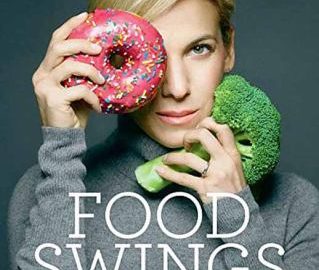
Bibliobites in September: Virtue, Vice, and Everything Nice
 With so much conflicting information out there about the best or healthiest way to eat, what’s your average person to do? Do we come down firmly on the side of “virtue,” focusing on protein, veggies, and modest amounts of “good” fats? Or do we succumb to “vice,” and hunker down with lots of sugars, carbs, and the tempting trifecta of butter, cheese, and full-fat dairy? Jessica Seinfeld’s newest book, Food Swings: 125+ recipes to enjoy your life of virtue and vice, aims to find a middle ground where we can enjoy eating — well, pretty much anything!
With so much conflicting information out there about the best or healthiest way to eat, what’s your average person to do? Do we come down firmly on the side of “virtue,” focusing on protein, veggies, and modest amounts of “good” fats? Or do we succumb to “vice,” and hunker down with lots of sugars, carbs, and the tempting trifecta of butter, cheese, and full-fat dairy? Jessica Seinfeld’s newest book, Food Swings: 125+ recipes to enjoy your life of virtue and vice, aims to find a middle ground where we can enjoy eating — well, pretty much anything!
As you might guess, the book is organized into two halves: the first, dubbed “virtue” contains recipes that showcase ample quantities of vegetables, whole grains, and lean proteins. Conversely, the “vice” half cuts loose a bit, with recipes featuring plenty of cheese, red meat, and calorie-dense desserts. In either half of the book, we found that most of the recipes were relatively simple and easy to follow, and many fit on one page. The large format was attractive, and photos were numerous and visually appealing. And thanks to its larger size, the book stayed open when we wanted it to. One common complaint was that the time listed to make the recipe was noticeably inaccurate– it took most of us way longer than the author stated. We ultimately decided that the time listed referred to time spent actually cooking, after all ingredient-locating and prepping was complete. But once all the chopping and cooking was done, did we enjoy the results?
On the “virtue” side, there were some definite winners. Four people made roasted spaghetti squash with almonds, cinnamon, and sage— and everyone thought this was a fantastic combination of flavors. In particular, we liked the fresh sage. One drawback– the thick-skinned squash is tricky to cut in half when raw; caution must be exercised to avoid injury! Moroccan chicken also featured a nice combination of spices and was easy to put together. We also liked  cod with garlicky tomatoes and potatoes which was a simple yet tasty one-pot meal. Another good weeknight choice was tangy and spicy chicken and peppers, a colorful dish that came together quickly. Quinoa chili was “much better than I thought it would be,” really delicious and probably a keeper! Quinoa also made an appearance in the quinoa banana-date muffins, which were a tender yet hearty breakfast muffin, pleasantly sweet without any added sugar. One caveat: they contain mostly almond flour, which is an expensive ingredient And roasted plums with honey and pistachios turned out to be the simplest, most amazingly yummy dessert– roasting the fruit brought out its sweet-tart flavor, and the pistachio and mint garnish put it all over the top.
cod with garlicky tomatoes and potatoes which was a simple yet tasty one-pot meal. Another good weeknight choice was tangy and spicy chicken and peppers, a colorful dish that came together quickly. Quinoa chili was “much better than I thought it would be,” really delicious and probably a keeper! Quinoa also made an appearance in the quinoa banana-date muffins, which were a tender yet hearty breakfast muffin, pleasantly sweet without any added sugar. One caveat: they contain mostly almond flour, which is an expensive ingredient And roasted plums with honey and pistachios turned out to be the simplest, most amazingly yummy dessert– roasting the fruit brought out its sweet-tart flavor, and the pistachio and mint garnish put it all over the top.
There were some misses in this half of the book as well. Vegetable soup was “a definite no,” as its flavor was anemic– probably because its base was water, not broth. Roasted carrots and chickpeas with feta vinaigrette was initially pretty appealing (and the crispy chickpeas by themselves were excellent), but unfortunately it wasn’t good when reheated. Baked vegetable chips were hard to get right– the potato peeler recommended to make the chips made slices that were too thin, and using a mandoline seemed to make them too thick! Two people tried the ginger salmon with sesame cucumbers and thought it was just OK– no one liked the cucumbers; and the dish needed more accompaniments to make it a meal (how about the spaghetti squash above??). Farro bowl with shaved broccoli and Parmesan was loaded with obviously healthy ingredients, but it wasn’t that enjoyable to eat; the taste was “meh!”  Lemon-thyme milk-braised chicken with spinach was similarly noticeably virtuous; but though the milk-braising idea was intriguing, overall it was a fairly boring dish. And (as the photo shows), the milk sauce curdled and separated despite careful adherence to the recipe, which made a visually unappealing mess. Lastly, coconut milk panna cotta was a disappointment– it was very plain, and even if it was on the “virtue” side, it definitely needed more sugar– or something!
Lemon-thyme milk-braised chicken with spinach was similarly noticeably virtuous; but though the milk-braising idea was intriguing, overall it was a fairly boring dish. And (as the photo shows), the milk sauce curdled and separated despite careful adherence to the recipe, which made a visually unappealing mess. Lastly, coconut milk panna cotta was a disappointment– it was very plain, and even if it was on the “virtue” side, it definitely needed more sugar– or something!
So we certainly gave virtue a fair try; what about vice? Many of the main dish recipes on this side of the book could be defined as comfort food– for instance, a few people tried red wine and shallot beef stew. The recipe featured a rich wine sauce with chunky vegetables; it reheated well, as many stews do. One person felt this recipe was nothing special, but others thought it was a very good version of this classic dish. There were some other classic dishes in this section that we enjoyed: the lasagne bolognese was “really delicious– meaty and creamy;” corn chowder with bacon was extra-good with its crunchy-fresh off-the-cob sweet corn; shrimp scampi had a tasty, hearty sauce; and pulled bbq chicken sandwiches with coleslaw had a fantastic classic sauce, and the coleslaw was excellent as well. Blue cheese burgers weren’t anything innovative; but were definitely enjoyable, since how can you go wrong with a burger and blue cheese? 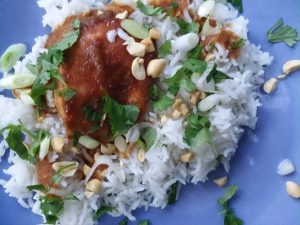 Peach and sriracha chicken over coconut rice was a winner– nicely spiced chicken and rich-tasting rice. Its garnish of scallions, peanuts, and cilantro made the dish look beautiful, and enhanced its flavors as well. Spicy eggplant pasta also had a bit of heat, though not all that much– just a bit of red pepper flakes. The roasted vegetables in this dish were first-rate all by themselves, but the completed dish was “good, not great.” Pine nut and parsley pasta was similarly good, but “kind of ordinary.” On the other hand, creamy mushroom pasta was super-creamy and smooth, with plenty of mushrooms– just a wonderful combination. Crispy fish with tartar sauce was crunchy and tasty; it was a standard version of this classic that most of us always enjoy. With your fish you might like skillet-roasted potatoes and tomatoes, which was a fine combination of the two main ingredients. In the dessert section, two people made one-pot mocha brownies. While they were perfectly fudgy and chocolatey, neither cook thought they were better than their usual recipe. And apple galette showcased a nicely flaky crust with a complementary tart Granny Smith filling.
Peach and sriracha chicken over coconut rice was a winner– nicely spiced chicken and rich-tasting rice. Its garnish of scallions, peanuts, and cilantro made the dish look beautiful, and enhanced its flavors as well. Spicy eggplant pasta also had a bit of heat, though not all that much– just a bit of red pepper flakes. The roasted vegetables in this dish were first-rate all by themselves, but the completed dish was “good, not great.” Pine nut and parsley pasta was similarly good, but “kind of ordinary.” On the other hand, creamy mushroom pasta was super-creamy and smooth, with plenty of mushrooms– just a wonderful combination. Crispy fish with tartar sauce was crunchy and tasty; it was a standard version of this classic that most of us always enjoy. With your fish you might like skillet-roasted potatoes and tomatoes, which was a fine combination of the two main ingredients. In the dessert section, two people made one-pot mocha brownies. While they were perfectly fudgy and chocolatey, neither cook thought they were better than their usual recipe. And apple galette showcased a nicely flaky crust with a complementary tart Granny Smith filling.
Overall, though most in the group enjoyed at least a few recipes from this book, no one felt that it offered anything groundbreaking. The idea of sometimes eating super-healthily and other times more indulgently isn’t a foreign concept for most people– so do we need a cookbook to validate that idea? It also seemed that some of the recipes from one category could have arguably been in the other– perhaps another indication that “healthy” is a more fluid concept than is generally acknowledged. People did enjoy the simplicity and ease of preparation of most of the recipes, and there were some definite standouts. Those who liked this title really liked it; but some were ambivalent– and thus our voting averaged out to a 3.5 (out of a possible 5).
 We’ll next meet on Friday, October 26 at 11 AM in the Fireplace Room. We’ll be exploring an ’80s classic this month: The Silver Palate Cookbook by Julee Rosso and Sheila Lukins. Copies are available at the main desk. All are welcome, hope to see you there!
We’ll next meet on Friday, October 26 at 11 AM in the Fireplace Room. We’ll be exploring an ’80s classic this month: The Silver Palate Cookbook by Julee Rosso and Sheila Lukins. Copies are available at the main desk. All are welcome, hope to see you there!
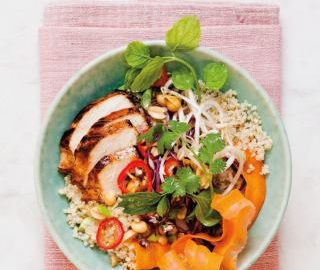
Bibliobites in June: Belatedly Bowling
September is here, which means that soon our Bibliobites group will again be reading, cooking, and reporting back on their culinary adventures. Some of you may have noticed the lack of a review about our June meeting; and much as I’d like to blame my omission on an extended vacation to an exotic location, I’m afraid I don’t have such an enticing excuse—but let’s just pick up where we left off…….
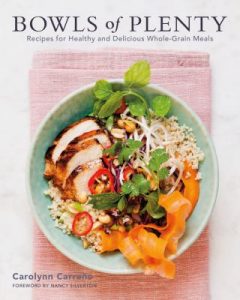 Grain bowls, it seems, are everywhere these days. You can find them in small cafes, breakfast diners, fast food outlets, coffee shops, and fancy bistros. They are ubiquitous for some of the same reasons that their cousin, the salad bar, is so popular: you can mix and match a wide range of fresh ingredients to suit yourself, and assemble a complete meal in one tidy package—or bowl, as it were! And our June title, Bowls of Plenty by Carolynn Carreno, aims to show us how simple it is to make a wide range of bowls at home for breakfast, lunch, dinner, or dessert. But were we bowled over by the possibilities, or did Ms. Carreno roll us a gutter ball?
Grain bowls, it seems, are everywhere these days. You can find them in small cafes, breakfast diners, fast food outlets, coffee shops, and fancy bistros. They are ubiquitous for some of the same reasons that their cousin, the salad bar, is so popular: you can mix and match a wide range of fresh ingredients to suit yourself, and assemble a complete meal in one tidy package—or bowl, as it were! And our June title, Bowls of Plenty by Carolynn Carreno, aims to show us how simple it is to make a wide range of bowls at home for breakfast, lunch, dinner, or dessert. But were we bowled over by the possibilities, or did Ms. Carreno roll us a gutter ball?
The book itself generated one universal complaint: the print is tiny! I could just envision everyone at home, squinting over the page (as I was) as they tried to decipher an ingredient list. To add insult to injury, the type isn’t a crisp black; it’s a soft gray that further reduces readability. On the plus side, the teensy type meant that many of the recipes fit on one page. The numerous photographs depicted the bowls artistically, beautifully displaying a recipe’s multiple components. And the book was a nice size, big enough to stay open easily, but small enough to hold comfortably.
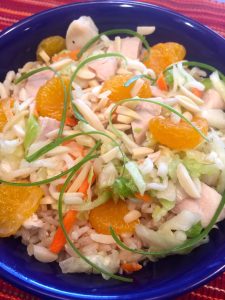 Once we were actually able to read the recipes, there were some definite hits. The Baja bbq shrimp bowl with corn rice was quite tasty; the sauce for the shrimp was especially good. Warm chicken Caesar bowl featured quinoa for its grain base, which combined well with the marinated chicken. Three people tried Chinese chicken salad, and all thought the directions to toast the bowl’s cooked rice until crispy just didn’t work. It didn’t improve the taste or texture of the finished dish. Otherwise this was a refreshing melange of ingredients; but just use regular cooked rice!
Once we were actually able to read the recipes, there were some definite hits. The Baja bbq shrimp bowl with corn rice was quite tasty; the sauce for the shrimp was especially good. Warm chicken Caesar bowl featured quinoa for its grain base, which combined well with the marinated chicken. Three people tried Chinese chicken salad, and all thought the directions to toast the bowl’s cooked rice until crispy just didn’t work. It didn’t improve the taste or texture of the finished dish. Otherwise this was a refreshing melange of ingredients; but just use regular cooked rice! 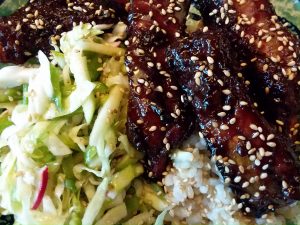 Five spice riblets with sticky rice and apple slaw was excellent; the ingredients played well together and the whole thing was fairly simple to make.
Five spice riblets with sticky rice and apple slaw was excellent; the ingredients played well together and the whole thing was fairly simple to make.
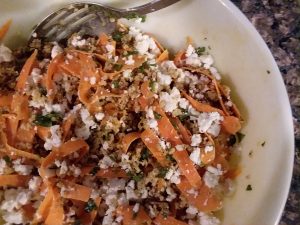 Rainbow carrot salad with millet was a hit and a miss—the millet was a bit fussy to cook, though the overall combination was colorful and enjoyable. And spiced rice and lentils with seared halloumi suffered from “bland” rice and lentils, though the halloumi was good, if a bit salty. The baba ganoush served with it was a delectable version of this well-known side dish. The farmers’ market bowl, despite its pleasant assortment of veggies, was kind of boring, though its accompanying green goddess dressing was first-rate and could easily be put to many uses.
Rainbow carrot salad with millet was a hit and a miss—the millet was a bit fussy to cook, though the overall combination was colorful and enjoyable. And spiced rice and lentils with seared halloumi suffered from “bland” rice and lentils, though the halloumi was good, if a bit salty. The baba ganoush served with it was a delectable version of this well-known side dish. The farmers’ market bowl, despite its pleasant assortment of veggies, was kind of boring, though its accompanying green goddess dressing was first-rate and could easily be put to many uses.
There were some definite opinions about this title, and grain bowls in general. It can be time-consuming to prep vegetables and/or protein, to make sauce, cook whole grains, etc. Once you have several components ready in your fridge, you’re golden—you have the makings for multiple quick meals. In fact some do this already with leftovers, assembling a meal from bits and pieces hanging around in the fridge. But to make a bowl from scratch, all in one go, means spending some quality time in the kitchen. Perhaps this is why bowls are so popular in restaurants—you can pick and choose without having to do it all yourself. Bowls can therefore also be a good choice for a party or a family—everyone chooses the parts they like best, and hopefully everyone helps with prep. Another consideration (I’m talking to you, Mr. Fussy) is that some people don’t like foods all mixed together, which is pretty much what bowls are all about. So while most said they enjoyed this style of eating and understood why it was popular, not too many wanted to “go bowling” at home.
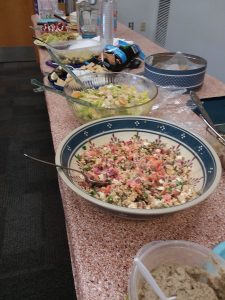 We ended our meeting with a potluck lunch, where we enjoyed so many delicious dishes, including some of the recipes mentioned above. Thank you to all for your efforts, and for your participation over the past year. I look forward to seeing everyone on Friday, September 28 at 11 AM in the Fireplace Room, when we’ll be discussing Jessica Seinfeld’s Food swings: 125 recipes to enjoy your life of virtue and vice. Copies are available at the main desk.
We ended our meeting with a potluck lunch, where we enjoyed so many delicious dishes, including some of the recipes mentioned above. Thank you to all for your efforts, and for your participation over the past year. I look forward to seeing everyone on Friday, September 28 at 11 AM in the Fireplace Room, when we’ll be discussing Jessica Seinfeld’s Food swings: 125 recipes to enjoy your life of virtue and vice. Copies are available at the main desk.
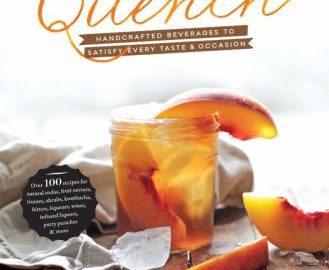
Bibliobites in May: Fizzy, Fruity, and Fresh
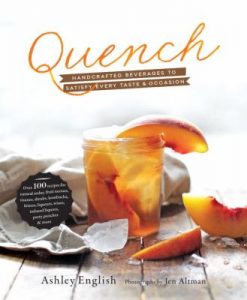 Author Ashley English is a sort of one-woman cottage industry for teaching “homesteading” skills; she’s written books on beekeeping, canning, home dairying (a past Bibliobites selection), and keeping chickens. This month’s title, Quench: Handcrafted Beverages to Satisfy Every Taste and Occasion, is in a similar vein. As in her other books, English shows us how to make something (in this case, beverages) from scratch that we would normally buy at a store. Is it worth the time and trouble to D-I-Y?
Author Ashley English is a sort of one-woman cottage industry for teaching “homesteading” skills; she’s written books on beekeeping, canning, home dairying (a past Bibliobites selection), and keeping chickens. This month’s title, Quench: Handcrafted Beverages to Satisfy Every Taste and Occasion, is in a similar vein. As in her other books, English shows us how to make something (in this case, beverages) from scratch that we would normally buy at a store. Is it worth the time and trouble to D-I-Y?
Making fizzy drinks appealed to a few people; two tried the orange soda but had contrasting opinions on the outcome. One person thought it was refreshing and not overly sweet (in a good way); but for another person it was too mild– just not orange-y enough. On the other hand, ginger brew had plenty of clean, sharp ginger flavor that would hit the spot on a hot day; and the cola was a tasty, sweet-and-spicy blend that could more than hold its own against its commercial red-canned cousin. One group member wanted to make root beer but was discouraged when she read the list of ingredients, which included such rarities as sarsaparilla root and sassafras root. Though these items might be purchased online, you’d likely have to buy a far larger quantity than you needed, and/or spend more than you’d like. The same problem surfaced with rhubarb bitters (an ingredient in strawberry fields forever, a delicious-sounding cocktail), which seemed like a fun seasonal recipe– but it called for dried dandelion root, angelica root, and hyssop. Unless you have an herb garden, or have dug up the dandelions in your yard, those ingredients would be difficult to find. Two other dried herbs that proved oddly troublesome to locate were spearmint and peppermint, called for in happy belly tea. These at least are embarrassingly easy to grow at home, if mint tea is a favorite of yours.
Other summery drinks we tried included the blueberry lemonade, which was a winner: it had plentiful blueberry flavor that played well with the tart lemon. It would be a perfect drink for a summer party: fruity, refreshing, and easy to make. Watermelon agua fresca was also quick and simple to prepare; it was “delicious!” and not too sweet, containing only one tablespoon of honey per batch.  Horchata, an iced Mexican drink made with homemade rice milk and cinnamon, was a bit on the sweet side but was quite refreshing nonetheless. Though you had to plan ahead to make this (the rice steeps in water for four hours), there were only a few simple steps overall, and the result was something distinct and tasty. We noted the absence in this book of that popular summertime New England drink, the raspberry lime rickey. This fizzy concoction is a staple on local summer restaurant menus, but it’s certainly easy to make yourself. Perhaps author English, being from North Carolina, is not familiar with this treat?
Horchata, an iced Mexican drink made with homemade rice milk and cinnamon, was a bit on the sweet side but was quite refreshing nonetheless. Though you had to plan ahead to make this (the rice steeps in water for four hours), there were only a few simple steps overall, and the result was something distinct and tasty. We noted the absence in this book of that popular summertime New England drink, the raspberry lime rickey. This fizzy concoction is a staple on local summer restaurant menus, but it’s certainly easy to make yourself. Perhaps author English, being from North Carolina, is not familiar with this treat?
This book, like most of English’s other titles, has a somewhat smaller format; but since most of the recipes are brief, almost all fit on one page. The book did have some trouble staying open, as the binding is quite tight. Even when opened to the middle pages, it would flop closed– a common, if minor, annoyance. Numerous lush, evocative photographs paint a picture of a relaxed rural lifestyle; the photos were so gorgeous that they proved a bit intimidating for some–“my life sure doesn’t look like that!” Agreed; but perhaps we can all dream a bit? And if you’re looking for new ideas on how to attractively present/serve beverages, the photos provide lots of inspiration.
Overall, the main problem with this title (as has been true with a few books this year) is that while we might appreciate the concept of making it ourselves, in actual practice we don’t want to spend the extra time (real or perceived) that it takes. For us this title kind of fell into the “hobby” category: though it won’t get dinner on the table, it’s fun to experiment with when we want to play in the kitchen. This book would be a good choice for a gardener interested in herbs or fruit; for someone who’s really into beverages as a category; or for someone who enjoys the D-I-Y aspect. Though most of us discovered at least one recipe we’d be happy to (occasionally) make again, our overall rating was a “3ish” out of a possible five. So is it worth the time and trouble to do it yourself? Our answer is a resounding “maybe….sometimes….sort of!”
 Our last meeting until September will be on Friday, June 29 at 11 AM in the McCarthy Meeting Room. June’s title is Bowls of Plenty by Carolynn Carreno; copies are available at the main desk. This meeting will feature a potluck lunch; bring an (optional) bowl or salad to share, either from the book or one of your tried-and-true favorites. All are welcome, please join us!
Our last meeting until September will be on Friday, June 29 at 11 AM in the McCarthy Meeting Room. June’s title is Bowls of Plenty by Carolynn Carreno; copies are available at the main desk. This meeting will feature a potluck lunch; bring an (optional) bowl or salad to share, either from the book or one of your tried-and-true favorites. All are welcome, please join us!
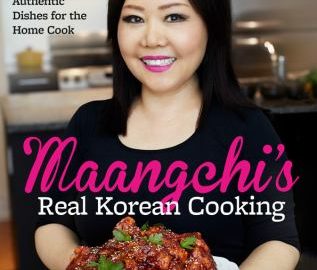
Biblioibites in April: Anyeong-haseyo* Korea!
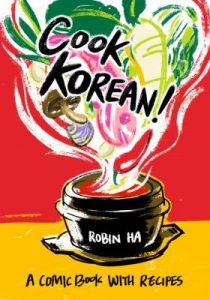 Our April meeting opened with a question: why Korea, as in what was the impetus for choosing this particular cuisine? While the short answer is, “why not,” there’s a bit more to it than that. Korean food’s profile in the US has been steadily rising over the last ten years or so; information and ingredients have become much more readily available (at least in metropolitan areas), Korean restaurants have sprouted (bean-sprouted?) up in towns both large and small, and food articles in magazines and newspapers regularly feature recipes for some of Korea’s iconic dishes, like kimchi or bibimbap. So it seems that Korean food has arrived and is poised to become as common and beloved as, say, Chinese, Thai, or Italian.
Our April meeting opened with a question: why Korea, as in what was the impetus for choosing this particular cuisine? While the short answer is, “why not,” there’s a bit more to it than that. Korean food’s profile in the US has been steadily rising over the last ten years or so; information and ingredients have become much more readily available (at least in metropolitan areas), Korean restaurants have sprouted (bean-sprouted?) up in towns both large and small, and food articles in magazines and newspapers regularly feature recipes for some of Korea’s iconic dishes, like kimchi or bibimbap. So it seems that Korean food has arrived and is poised to become as common and beloved as, say, Chinese, Thai, or Italian.
Still, it’s fair to say that most of us aren’t all that familiar with Korean food, and it can be intimidating to experiment with unknown ingredients and new flavor combinations. This month’s titles gave us plenty of advice and assistance in navigating our way through uncharted waters!
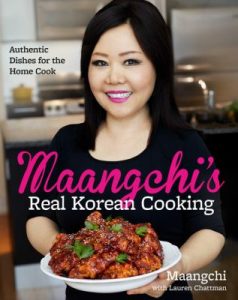 There are many websites that have information about, and recipes for, Korean food. One of the better-known ones is written by Maangchi. Her blog and videos have become so popular that she eventually wrote a cookbook, Maangchi’s Real Korean Cooking, which a few of us tried out. The book is large-format with heavy, glossy paper and plenty of photos, which are extra-helpful when you’re completely unsure what a finished dish should look like. Maangchi’s “voice” is friendly and helpful– it’s almost like having a Korean friend in your kitchen. We liked that she provides general information about the composition and presentation of a Korean meal; the book also has a nice glossary of Korean ingredients (with helpful photos of each), and a list of possible substitutions. Two additional titles we used,
There are many websites that have information about, and recipes for, Korean food. One of the better-known ones is written by Maangchi. Her blog and videos have become so popular that she eventually wrote a cookbook, Maangchi’s Real Korean Cooking, which a few of us tried out. The book is large-format with heavy, glossy paper and plenty of photos, which are extra-helpful when you’re completely unsure what a finished dish should look like. Maangchi’s “voice” is friendly and helpful– it’s almost like having a Korean friend in your kitchen. We liked that she provides general information about the composition and presentation of a Korean meal; the book also has a nice glossary of Korean ingredients (with helpful photos of each), and a list of possible substitutions. Two additional titles we used, 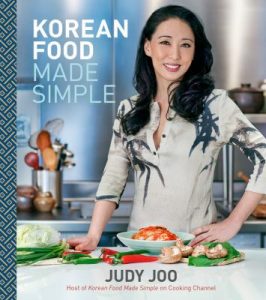 Korean Food Made Simple by Judy Joo, and The Kimchi Chronicles by Marja Vongerichten, had similar formats and equally useful ingredient glossaries. These two titles were both written in conjunction with TV shows: Joo’s book came out of a Cooking Channel show, and Vongerichten’s is a companion to a 2011 PBS series. All three titles aim (successfully) to demystify Korean cooking and make it accessible to all.
Korean Food Made Simple by Judy Joo, and The Kimchi Chronicles by Marja Vongerichten, had similar formats and equally useful ingredient glossaries. These two titles were both written in conjunction with TV shows: Joo’s book came out of a Cooking Channel show, and Vongerichten’s is a companion to a 2011 PBS series. All three titles aim (successfully) to demystify Korean cooking and make it accessible to all. 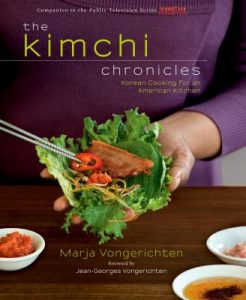 Finally, just for fun, we checked out Cook Korean! by Robin Ha. This unique book is written in graphic-novel format, which was fun to read, though it was sometimes a bit tricky to follow the flow of the drawings. And since those illustrations were drawings rather than photos, they weren’t quite as helpful at the market; we did enjoy the short comics within the book that told stories about the author’s life and cooking journey.
Finally, just for fun, we checked out Cook Korean! by Robin Ha. This unique book is written in graphic-novel format, which was fun to read, though it was sometimes a bit tricky to follow the flow of the drawings. And since those illustrations were drawings rather than photos, they weren’t quite as helpful at the market; we did enjoy the short comics within the book that told stories about the author’s life and cooking journey.
All of these books had (of course) recipes for kimchi, and a few of us took the plunge and attempted this quintessential dish. This recipe is also one of the few that necessitated a trip to a Korean market, as it requires hot pepper flakes, which are unavailable in local supermarkets. We agreed that it certainly wasn’t hard to make, though it took some time between the chopping of vegetables, salting and then draining them, combining with the seasonings, and then fermenting for a few days. Some of us used considerably less pepper flakes than was called for– but this is the virtue of making it yourself! One person thought it was a fun experiment, and the kimchi was good, but not so much so that she wanted to make it again. Some in the group don’t care for the characteristic sourness of kimchi, though this can be controlled somewhat by refrigerating the kimchi as soon as it’s made, so it ferments much more slowly. Or you could try water kimchi, which is made without red pepper and is “crunchy and refreshing.”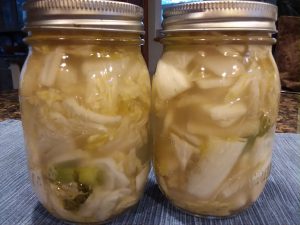
Several of the recipes in both Korean Food Made Simple and Kimchi Chronicles were Korean-inspired rather than authentically Korean; most of these were quick to make and more approachable from a Western perspective– perhaps you could say that they are “gateway recipes”! A few of us made 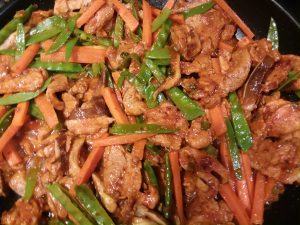 spicy pork stir-fry and thought it was absolutely delicious. The pork and vegetables were cooked in a flavorful sauce featuring gochujang (red pepper paste), a key ingredient for Korean cooks (one person discovered this ingredient at Target– so you know Korean food has really gone mainstream!). Scallion salad was a quick side dish that was “really good,” as was spice-rubbed Korean chicken. Ginger fried rice was “the best fried rice ever,” and kimchi fried rice was a tasty vehicle for kimchi– if you like kimchi. Beef bulgogi was too sweet, though the marinade was a tasty combination overall. Bibimbap made use of leftover bulgogi, as well as the traditional assortment of vegetables. Served atop rice, it’s a savory bowl of wonderful flavors and textures. All of the above recipes from Kimchi Chronicles. Both mom’s bbq chicken
spicy pork stir-fry and thought it was absolutely delicious. The pork and vegetables were cooked in a flavorful sauce featuring gochujang (red pepper paste), a key ingredient for Korean cooks (one person discovered this ingredient at Target– so you know Korean food has really gone mainstream!). Scallion salad was a quick side dish that was “really good,” as was spice-rubbed Korean chicken. Ginger fried rice was “the best fried rice ever,” and kimchi fried rice was a tasty vehicle for kimchi– if you like kimchi. Beef bulgogi was too sweet, though the marinade was a tasty combination overall. Bibimbap made use of leftover bulgogi, as well as the traditional assortment of vegetables. Served atop rice, it’s a savory bowl of wonderful flavors and textures. All of the above recipes from Kimchi Chronicles. Both mom’s bbq chicken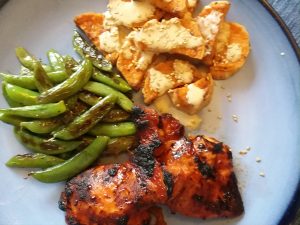 and Korean pulled pork from Korean Food Made Simple were hits– the chicken was moist and delicious with lots of flavor. It featured an excellent dipping sauce, as well. The pork was yummy and simple– savory, sweet, and spicy all at once. A keeper!
and Korean pulled pork from Korean Food Made Simple were hits– the chicken was moist and delicious with lots of flavor. It featured an excellent dipping sauce, as well. The pork was yummy and simple– savory, sweet, and spicy all at once. A keeper!
Maangchi’s book is perhaps the most authentic one we road-tested, but that didn’t stop people from diving in. Steamed eggplant was easy and a keeper, as was blanched spinach with scallions and sesame. Seafood-scallion pancakes, though different than the Chinese variety, were delicious with generous amounts of their namesake ingredients. The ridiculously simple dipping sauce was the perfect accent. Korean-style zucchini pancakes weren’t pancakes per se, but rather lightly breaded and fried zucchini slices. They were served with creamy pine nut sauce; the sweet-and-sour sauce was a good foil for the tender zucchini. Korean-style curry rice required a trip to a specialty store to buy Korean curry powder, but the completed dish was so good it was worth the effort. Panfried tofu didn’t sound like it would be tasty, but turned out to be “much better than expected;” it also had a very flavorful dipping sauce. We sampled the braised lotus root at our meeting; it was crunchy with a delicious slightly sweet glaze. A few of us tried the iconic jjajangmyeon (noodles with black bean paste). This is an extremely popular, ubiquitous dish adopted from China, but all of us who made it thought it was pretty boring. (I did think it tasted better after sitting in the fridge for a couple of days). Japchae, another classic Korean noodle dish, was excellent, with its nicely chewy noodles, stir-fried vegetables, and marinated beef.
One drawback of much of Korean cooking can be inferred from some of the above descriptions: there is a lot of prep, as most ingredients need to be diced, shredded, or cut into matchsticks. However, you do save time on the cooking end, since all those small pieces of food cook quickly. The extensive prep, and numerous sauces, also led to a mountain of dirty dishes, so be warned if you don’t have a dishwasher! Most of the recipes in these books had many common ingredients, which was good for using up our stashes of Korean sauces, pastes, and hot pepper, but sometimes that made it seem that everything had the same flavors. One quirk we discovered is that several popular Korean recipes use some distinctly American ingredients, like Spam, American cheese, canned tuna, and hot dogs– a legacy of the US’s participation in the Korean War. Many of these items show up in Korean comfort foods like stews and noodle soups. Maangchi has a recipe for kimchi stew with tuna, which sounded a bit weird but tasted delicious. Kimchi Chronicles‘ recipe for fried rice with kimchi advises us to melt American cheese on top of the finished dish, as this is considered comfort food at its finest.
Will we continue to cook Korean? For most of us, it’s not in our wheelhouse and requires extra effort in the shopping and prep department; so perhaps it would be more now-and-then rather than every week. At least now if we want Korean food we can go to a restaurant instead of having to make it ourselves; and some experience with Korean flavors and ingredients makes it easier, more fun, and more delicious when we order takeout or stop at a Korean restaurant. If you want to cook Korean yourself, any of the books we tried would be a good choice; they were all clearly written, easy to use, and loaded with explanatory photographs. Because we had four titles, we didn’t rate them, as each individual book was used by very few people.
 Our next meeting will be on Friday, June 1 at 11 AM in the Fireplace Room. Please note the date change; we will not meet on May 25 but on June 1. May’s title is Quench: handcrafted beverages to satisfy every taste and occasion by Ashley English. Copies are available at the main desk.
Our next meeting will be on Friday, June 1 at 11 AM in the Fireplace Room. Please note the date change; we will not meet on May 25 but on June 1. May’s title is Quench: handcrafted beverages to satisfy every taste and occasion by Ashley English. Copies are available at the main desk.
*Anyeong-haseyo = Hello!
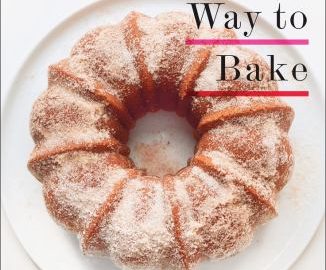
Bibliobites in March: Better Baking?
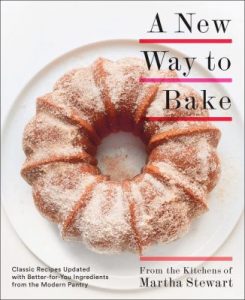 What better way to counteract the persistent snow and chill of March than by turning on the oven and baking something warm and buttery? There’s not much that’s better at warding off the late-winter-when-is-spring-ever-going-to arrive blues than a freshly baked something served up with a steaming hot cup of coffee. This month we devoted ourselves to the (mostly) sweet side of things with Martha Stewart’s A New Way to Bake, which features “classic recipes updated with better-for-you ingredients from the modern pantry.”
What better way to counteract the persistent snow and chill of March than by turning on the oven and baking something warm and buttery? There’s not much that’s better at warding off the late-winter-when-is-spring-ever-going-to arrive blues than a freshly baked something served up with a steaming hot cup of coffee. This month we devoted ourselves to the (mostly) sweet side of things with Martha Stewart’s A New Way to Bake, which features “classic recipes updated with better-for-you ingredients from the modern pantry.”
Martha Stewart has certainly been at the forefront of America’s food renaissance since the 1980s, when Entertaining made a huge splash. Her insistence on topnotch ingredients and attention to detail won her legions of fans. But these days, she seems to leave much to her staff; the “author” of our title is “the kitchens of Martha Stewart.” Obviously there’s nothing wrong with a group effort, but we felt that the book suffered a bit from the lack of ownership that a single author might have provided. There were some unexpected editing mistakes: a pancake recipe labeled “gluten-free” contained wheat flour; and some choices that made the book less user-friendly, such as not warning us when an ingredient was to be “divided”– that is, part used up front and part later. Some ingredients were listed in ways that made it harder to buy them; one recipe lists “3 cups grated zucchini,” when it would be far easier if we’d been told “1 pound zucchini, grated (3 cups)”, since we normally buy produce by weight. These are small complaints, but they did affect our overall enjoyment of the book. And this title suffered from the cardinal sin of absolutely refusing to stay open; the spine was so stiff that it was difficult to keep the book open even with a heavy weight on top (I resorted to using a large cast-iron skillet!).
But, as always, these petty annoyances will be overlooked if ultimately there are yummy results. Was that the case for our group of dedicated bakers? Read on, dear friends…..
In the breakfast department, coconut baked oatmeal was a winner: it was absolutely delicious, easy to make, and the coconut milk and ginger were perfect accents for the toothsome oats. Another standout was spiced apple and oat scones. These were moist and tender, and the spelt flour in them contributed depth and a touch of sweetness. Coconut pistachio biscotti were good for dunking, but the proportion of cornmeal was too high, which made for a gritty cookie (a better version: http://greekboston.com/cooking/paximathia/). 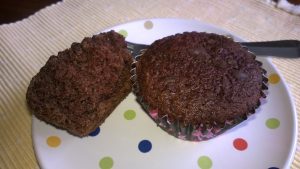 Double chocolate rye muffins had satisfying chocolate flavor, and the rye flour added a slightly bitter backnote that went well with the chocolate.
Double chocolate rye muffins had satisfying chocolate flavor, and the rye flour added a slightly bitter backnote that went well with the chocolate.
We tried several of the quick breads in this book, with mixed success. Coconut banana bread was praised for its subtle, tropical flavor. It had a beautiful texture, was moist and flavorful, and disappeared quickly! The Irish-style brown bread with whole wheat and rye flours was grainy and good– we sampled this at our meeting topped with smoked salmon and crème fraiche, which elevated it to a gourmet treat! On the down side, whole wheat date-nut bread took way longer to bake than the recipe indicated, and resulted in an inedible brick. Zucchini and chocolate loaves were OK but did not impress. Whole-grain cornbread was similarly fine but not outstanding– it tasted pretty much like any other cornbread.
Of course a few of us had to try the luscious-looking apple-cider doughnut cake which graces the cover of the book. It’s made with whole-wheat flour and olive oil, as well as applesauce and apple cider. One person thought it was heavy and didn’t have much flavor; another thought it was good, but the olive oil flavor was too strong. We sampled this at the meeting and the consensus was that it was tasty and not too olive-y. And, as it turned out, the olive flavor mellowed after a day or so. A third person had overall success with this recipe, though the apple flavor was not as strong as she would have liked. However all agreed that the cake they made looked every bit as pretty as the one on the cover!
In addition to the biscotti mentioned above, we tried pecan, oat, and dark chocolate chunk cookies. These cookies were good but fell apart when you ate them. The prescribed 1/4 cup size was too big; and overall they just weren’t good enough to bother with again. The dark chocolate spelt brownies had a nice fudgy taste, but the spelt flour imparted an unpleasant graininess. This was one recipe that tasted like it was trying a bit too hard to be healthy. Whole-wheat fig crumble squares had too much crumble and not enough filling; however, the almond-coconut macaroons, which we were fortunate to sample at our meeting, were very easy to make and a yummy treat. A keeper! And the sweet oat-walnut crisps, while a bit fussy to make, were a delicious less-sweet cookie– really more like a cracker. The coarse salt and flaxseeds added a welcome crunch and flavor.
One person bravely attempted a yeast dough, making hazelnut hot-cross buns. These were a major disappointment, producing “hockey pucks.” The dough never rose, perhaps because the instructions never have you proof your yeast before adding all the other ingredients; it was an overall epic fail! The honey whole-wheat bread did instruct you to proof your yeast, but the resulting loaf, though it looked and smelled wonderful, was still unpleasantly heavy and dense.
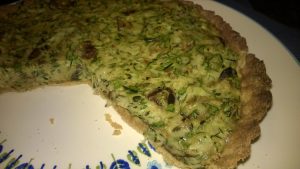 There were a few other epic fails on the savory side of things, mostly to do with various tart crusts. Mushroom tart had a half whole-wheat crust that was extremely problematic. The dough was gritty, almost impossible to knead (as instructed), and absolutely refused to come together, despite multiple tries. After buying a lot of expensive ingredients for the filling (lots of mushrooms, gruyère cheese) it was frustrating to spend so much time and energy on one component that never came out right. The filling did taste very good, though! The herb quiche with rye crust had a similarly difficult crust that ultimately was no better than crumbly. And the quantity of filling made for a very thin quiche; as with the mushroom tart, this recipe seemed like a lot of effort for a less than stellar finished product. On the other hand, chickpea-vegetable pancakes were quick, easy, and delicious; good for lunch or a snack.
There were a few other epic fails on the savory side of things, mostly to do with various tart crusts. Mushroom tart had a half whole-wheat crust that was extremely problematic. The dough was gritty, almost impossible to knead (as instructed), and absolutely refused to come together, despite multiple tries. After buying a lot of expensive ingredients for the filling (lots of mushrooms, gruyère cheese) it was frustrating to spend so much time and energy on one component that never came out right. The filling did taste very good, though! The herb quiche with rye crust had a similarly difficult crust that ultimately was no better than crumbly. And the quantity of filling made for a very thin quiche; as with the mushroom tart, this recipe seemed like a lot of effort for a less than stellar finished product. On the other hand, chickpea-vegetable pancakes were quick, easy, and delicious; good for lunch or a snack.
As should be obvious by now, everyone entered into this month’s baking with lots of energy and enthusiasm, but overall we were disappointed. We felt that with this book, Martha & Co. were simply jumping onto a trend, just swapping out white flour for something whole-grain, as opposed to developing recipes specifically designed to showcase those products. And although some recipes used oil instead of butter and less-processed sweeteners instead of white sugar, amounts certainly matched those in standard recipes; so if you’re looking to reduce fats and sugars, this is probably not the book for you. Once again our voting strongly reflected our experiences: we averaged out to 2.78 chef’s hats (out of a possible 5). One comment perhaps sums it all up: “My husband was so happy to see this book go back to the library!”
If you’re interested in whole-grain baking, here are a couple of titles that are worth checking out: Good to the Grain by Kim Boyce; or Better Baking by Genevieve Ko.
Our next meeting will be Friday, April 27 at 11 AM in the Fireplace Room. We’ll be in uncharted waters, learning about – and cooking Korean food! There are multiple titles; please choose one. All are available at the main desk. Guettae manna! (See you then! in Korean, according to Google Translate).
Bacon Sandwich
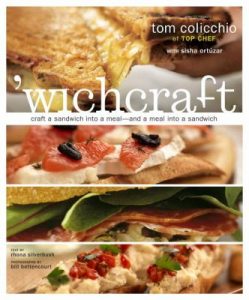 In February, Bibliobites members made lots of sandwiches from that month’s book, ‘wichcraft by Tom Colicchio. Thinking about sandwiches, making them, and eating them brought back a long-ago memory for me. Readers, have you ever enjoyed a transcendent sandwich? A combination of time, place, and ingredients that turned an everyday lunch into a blissful eating experience?
In February, Bibliobites members made lots of sandwiches from that month’s book, ‘wichcraft by Tom Colicchio. Thinking about sandwiches, making them, and eating them brought back a long-ago memory for me. Readers, have you ever enjoyed a transcendent sandwich? A combination of time, place, and ingredients that turned an everyday lunch into a blissful eating experience?
………It’s the mid-60s, and I am eight or nine years old. It’s summer vacation and the day is warm and sunny. I’m spending the day with my friend Colleen, at her great-aunt’s house in Freeport, NY, a town near the shore. The small white house has a velvety bright green lawn sloping down to a canal where we can see rows of glossy boats tethered to their docks. Noisy gulls circle endlessly overhead in a cloudless blue sky. We’re sitting on the grass not doing much of anything, enjoying our freedom and the sunshine. 
We’re here today because Mrs. Connolly, Colleen’s mom, is helping to take care of her aunt. The aunt is elderly and is ill with something that means she stays in bed in a darkened room. Looking back, I think she must have had a stroke or something similar involving a long convalescence, but at the time the aunt’s woes are of no concern to me. I am a little scared I may have to meet this unknown old person and even talk to her, but as it turns out we girls hardly set foot in the cool, dim house. Mrs. Connolly disappears into the kitchen, and we go outside into the stunning day.
 So there we are on the grass, leaning back propped up on our elbows, squinting at the water, and Mrs. Connolly comes towards us. She’s carrying two plates with sandwiches on them, and I suddenly realize it’s lunchtime and I’m hungry. She puts down the plates, and probably a glass of something to drink, too, but I don’t notice because I am amazed and thrilled by what’s been set in front of me: a whole sandwich filled with nothing but BACON! Now you have to understand that, like most kids (like most people!) I really like bacon; but it’s something doled out infrequently and in small quantities at my house. Whereas now, on my plate I see a generous length of soft Italian bread stuffed with MANY slices of salty, porky, fatty goodness, and it’s ALL FOR ME! I take a big bite and practically swoon with the perfection of it all—the tender, floury bread; the soul-satisfying smoky crispiness of the bacon—and nothing else. No mayo, or mustard, or lettuce, or tomato; nothing to interfere with that blessed bacon-ness. I devour every last crumb, with gusto.
So there we are on the grass, leaning back propped up on our elbows, squinting at the water, and Mrs. Connolly comes towards us. She’s carrying two plates with sandwiches on them, and I suddenly realize it’s lunchtime and I’m hungry. She puts down the plates, and probably a glass of something to drink, too, but I don’t notice because I am amazed and thrilled by what’s been set in front of me: a whole sandwich filled with nothing but BACON! Now you have to understand that, like most kids (like most people!) I really like bacon; but it’s something doled out infrequently and in small quantities at my house. Whereas now, on my plate I see a generous length of soft Italian bread stuffed with MANY slices of salty, porky, fatty goodness, and it’s ALL FOR ME! I take a big bite and practically swoon with the perfection of it all—the tender, floury bread; the soul-satisfying smoky crispiness of the bacon—and nothing else. No mayo, or mustard, or lettuce, or tomato; nothing to interfere with that blessed bacon-ness. I devour every last crumb, with gusto.
I honestly don’t remember anything else about that day; but the combination of the idyllic setting, the sun-soaked day, and the unexpected treat created an unforgettable for me. Most likely, Mrs. Connolly made that lunch for us because there wasn’t much else to eat in the house, and it was something quick and easy (this was well before the advent of microwaves). I’m sure she had no idea that I would think that sandwich was so incredible, but I’ve never forgotten it.
Love sandwiches? Love bacon? Then check out these titles: A Super Upsetting Cookbook About Sandwiches by Tyler Kord; Panini, Bruschetta, Crostini: Sandwiches Italian Style by Viana LaPlace; 300 Sandwiches: A Multi-layered Love Story—With Recipes by Stephanie Smith; The Banh Mi Handbook by Andrea Nguyen; Bacon Nation: 125 Irresistible Recipes by Peter Kaminsky; Seduced by Bacon by Joanna Pruess.
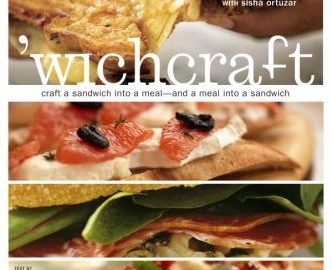
Bibliobites in February: ‘wich Sandwich?
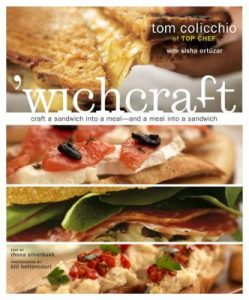 The humble sandwich is ubiquitous in most of our lives; just think about how often you’ve slapped together a PB & J or downed a “to-go” breakfast sandwich on your way to work. And how many times has a grilled cheese or BLT or Reuben just hit the spot, speedily satisfying hunger in a way few other things can? Author and Top Chef judge Tom Colicchio, along with his partner Sisha Ortuzar, recognized that most people enjoy and eat a lot of sandwiches– so they decided to kick it up a notch (so to speak) and open a café where sandwiches were produced with the same care and quality that goes into a “real” restaurant meal. Accordingly, the partners opened ‘wichcraft in New York City; and this month’s title, ‘wichcraft, is a compendium of many of the sandwiches served at the café. Did our group enjoy their month of meals served between two slices of (artisan) bread?
The humble sandwich is ubiquitous in most of our lives; just think about how often you’ve slapped together a PB & J or downed a “to-go” breakfast sandwich on your way to work. And how many times has a grilled cheese or BLT or Reuben just hit the spot, speedily satisfying hunger in a way few other things can? Author and Top Chef judge Tom Colicchio, along with his partner Sisha Ortuzar, recognized that most people enjoy and eat a lot of sandwiches– so they decided to kick it up a notch (so to speak) and open a café where sandwiches were produced with the same care and quality that goes into a “real” restaurant meal. Accordingly, the partners opened ‘wichcraft in New York City; and this month’s title, ‘wichcraft, is a compendium of many of the sandwiches served at the café. Did our group enjoy their month of meals served between two slices of (artisan) bread?
This book easily drew us in with its lush, up-close photographs. There’s a full-page photo of every sandwich next to its recipe; and the table of contents also has a photo next to each sandwich’s name. This made things easy to find, and easy to drool over! The book is divided into breakfast sandwiches, cold or warm sandwiches, and sweet sandwiches. Since it’s still winter, most of us focused on the warm sandwiches! Surprisingly, no one tackled a sweet sandwich; these were mostly of the cake-and-ice-cream variety. Perhaps it’s still too chilly out to think about eating ice cream?
When we all got down to cooking, there was one complaint that was repeated several times: many (if not most) of these sandwich creations required substantial advance work. Meat had to be roasted, or onions had to be caramelized, or relish had to be made. Some of the condiments had multiple components that all required prep. In a restaurant, it’s likely that many of these items would be regularly made in large quantity and therefore be readily available; but at home it seemed like a lot of effort to assemble all the elements of a given sandwich. And most of the time you didn’t use up the sauce or relish you had made, and were left finding another use for it. So there were some practical aspects of these recipes that could be a bit frustrating.
But we persevered nonetheless…a few people tried the gruyère with caramelized onions, which was tasty, though of course you had to roast the onions first! One person mentioned a similar recipe from the first Smitten Kitchen book which she felt was better– but it’s probably pretty hard to go wrong with onions and melted cheese! The 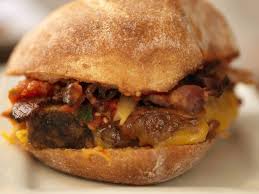 meatloaf with cheddar, bacon, and tomato relish was an excellent combination; the meatloaf itself, though very simple, was just right for the recipe. Be forewarned, though– you need to make the tomato relish, which requires that you first make the pickled mustard seeds that go into it! Another yummy meat-based sandwich was red wine-braised flank steak with roasted peppers, onions, and gruyère. This definitely required planning ahead, as the meat had to braise for 2 1/2 hours; also peppers had to be roasted and onions grilled. But it was a fantastic, if messy, meal. Roasted pork loin with prunes, dandelion greens, and mustard was commended for its top-notch sauce; and the roasted turkey with avocado, bacon, balsamic onion marmalade, and mayonnaise was a satisfying, if not totally original, combination. The onion marmalade was “good enough to eat on its own” and even made a fine topping for crackers, as we discovered at our meeting.
meatloaf with cheddar, bacon, and tomato relish was an excellent combination; the meatloaf itself, though very simple, was just right for the recipe. Be forewarned, though– you need to make the tomato relish, which requires that you first make the pickled mustard seeds that go into it! Another yummy meat-based sandwich was red wine-braised flank steak with roasted peppers, onions, and gruyère. This definitely required planning ahead, as the meat had to braise for 2 1/2 hours; also peppers had to be roasted and onions grilled. But it was a fantastic, if messy, meal. Roasted pork loin with prunes, dandelion greens, and mustard was commended for its top-notch sauce; and the roasted turkey with avocado, bacon, balsamic onion marmalade, and mayonnaise was a satisfying, if not totally original, combination. The onion marmalade was “good enough to eat on its own” and even made a fine topping for crackers, as we discovered at our meeting.
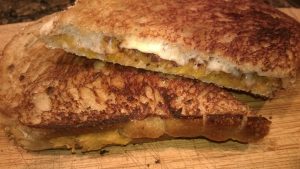 Roasted pumpkin with mozzarella and hazelnut brown butter was a winner– the hazelnut brown butter was exceptional. This was one condiment for which it was easy to imagine finding several other uses. At the meeting we sampled pan-fried eggplant with buffalo mozzarella, white anchovies, and raisin-pinenut relish; all the ingredients melded into a delicious whole. We also tasted chicken salad with walnuts, roasted tomatoes, pickled red onions, and frisée. As with many other recipes, the condiments were what made this sandwich really stand out. Roasted shrimp salad with tomatoes and olives was “a perfect summer recipe!” The bread wasn’t even necessary, as this combination made a wonderful salad. Roasted asparagus with red onions, basil, and vacherin was an uncomplicated open-faced sandwich; if vacherin is a bit too pricey you can use any cheese that melts easily. And
Roasted pumpkin with mozzarella and hazelnut brown butter was a winner– the hazelnut brown butter was exceptional. This was one condiment for which it was easy to imagine finding several other uses. At the meeting we sampled pan-fried eggplant with buffalo mozzarella, white anchovies, and raisin-pinenut relish; all the ingredients melded into a delicious whole. We also tasted chicken salad with walnuts, roasted tomatoes, pickled red onions, and frisée. As with many other recipes, the condiments were what made this sandwich really stand out. Roasted shrimp salad with tomatoes and olives was “a perfect summer recipe!” The bread wasn’t even necessary, as this combination made a wonderful salad. Roasted asparagus with red onions, basil, and vacherin was an uncomplicated open-faced sandwich; if vacherin is a bit too pricey you can use any cheese that melts easily. And 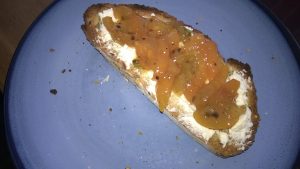 kumquat-rosemary marmalade with goat cheese, also open-faced, was a great way to try kumquats, which are in season from November to March. The tart, slightly bitter marmalade was a perfect foil for the creamy goat cheese.
kumquat-rosemary marmalade with goat cheese, also open-faced, was a great way to try kumquats, which are in season from November to March. The tart, slightly bitter marmalade was a perfect foil for the creamy goat cheese.
Despite the time involved, most of us had to agree that the various condiments added flavor and sophistication to the recipes; they were delicious on their own and had many potential uses. And once all was assembled, the sandwiches themselves were quite good. But since we think of a sandwich as a quick meal, it was hard to change our mindset; these sandwiches were really a full meal that just happened to be eaten between slices of bread– and took as much time to create as a complete dinner! We also noted that many of these sandwiches were pretty messy to eat, and wondered whether this ever bothered customers at the café. Perhaps café staff are better at stacking and containing ingredients than we are? We thought this book might be nice to have on hand for certain types of entertaining, like a special lunch or an upscale tailgate. The recipes are definitely a cut above your everyday sandwich, but it was enough of an effort that we just wanted someone else to make it for us. Perhaps we need a road trip to Manhattan to see how the experts do it! Our voting reflected this ambivalence, and we averaged out to 2.6 chef’s hats (out of a possible 5).
 Next month we’ll be delving into Martha Stewart’s A New Way to Bake. This title features a wide variety of baked goods showcasing less-common sweeteners and whole-grain flours. Copies are available at the main desk. Our next meeting will be on Friday, March 30 at 11 AM in the Fireplace Room. Hope to see you there, and happy baking!
Next month we’ll be delving into Martha Stewart’s A New Way to Bake. This title features a wide variety of baked goods showcasing less-common sweeteners and whole-grain flours. Copies are available at the main desk. Our next meeting will be on Friday, March 30 at 11 AM in the Fireplace Room. Hope to see you there, and happy baking!





